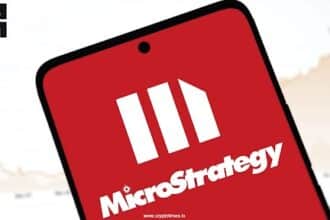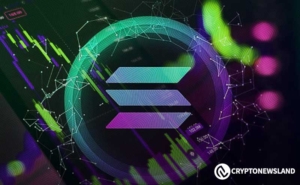Aegis Explained: The Next Big Name in Stablecoins?
Disclaimer: The content presented in this article, along with others, is based on opinions developed by the analysts at Dewhales and does not constitute sponsored content. At Dewhales, we firmly adhere to a transparency-first philosophy, making our wallets openly available to the public through our website or DeBank , and our articles serve as vehicles for self-expression, education, and contribution to the ecosystem.
Dewhales Capital does not provide investment advisory services to the public. Any information should not be taken as investment, accounting, tax or legal advice or as a recommendation to purchase, sell or hold or to pursue any investment style or strategy. The accuracy and appropriateness of the information is not guaranteed by Dewhales Capital.
1. Overview
2. Architecture, components, and features
3. Team
4. Tokenomics
5. Partners and backers
6. Development, roadmap, and future steps
7. Potential competitors
8. Community
9. Final thoughts
10. References
1. Overview
Aegis is a young yet ambitious project which issues a yield-bearing synthetic stablecoin, $YUSD. Founded in 2024, Aegis offers a Bitcoin-backed delta-neutral stablecoin while providing the users with real-time transparency, built-in yield generation, and complete independence from the fiat banking system. In essence, $YUSD has exactly what Arthur Hayes envisioned in his “Dust on Crust” essay; i.e. no ties to the fiat banking system.
Main features of $YUSD are:
Complete independence from existing stablecoins through use of coin-margined perpetual contracts.
Aegis holds Bitcoin as collateral and stabilizes $YUSD by selling Bitcoin-margined perpetual contracts equal to exposure.
New $YUSD can be created only when collateral in $USDT, $USDC, or $DAI is deposited into the Aegis’s Mint Smart Contract.
Aegis is dedicated to full legal compliance in all jurisdictions, ensuring their operations meet the highest regulatory standards.
Rewards are directly and effortlessly distributed, because there’s no need for staking.
Real-time transparency with a dashboard displaying off-chain reserves, exchange positions, and API access for direct monitoring.
Governed by DAO (soon).
2. Architecture, components, and features
Every person, being novice or seasoned, who intends to use a stablecoin in his/her financial activities, has one concern before starting: Is this stablecoin able to maintain its peg to $1?
To address this bold concern, Aegis has designed a smart three layer stability mechanism described as below:
$YUSD is backed by Bitcoin, meaning its value is directly tied to the Bitcoin it holds as collateral. To ensure $YUSD remains stable, Aegis sells perpetual contracts that mirror Bitcoin exposure. This hedging strategy balances out any gains or losses caused by Bitcoin’s price changes, keeping $YUSD’s value anchored at $1.
The second layer is provided by arbitrage traders. When the market price of $YUSD deviates from its peg, arbitrage opportunities for authorized users are created. These users can perform arbitrage by minting or redeeming $YUSD through our protocol, exploiting the price difference to their advantage.
When $YUSD trades above $1, users can mint new $YUSD by providing collateral, increasing the supply, and bringing the price back down. Conversely, when $YUSD trades below $1, users can redeem $YUSD for collateral, decreasing the supply and pushing the price back up.Last but not least is the Aegis’s Insurance Fund. The insurance fund is designed to handle extreme market events, such as the March 2020 market crash, where Bitcoin’s price dropped by nearly 50% within hours. By accumulating reserves from positive yields, the fund acts as a buffer, maintaining $YUSD’s stability. Currently, Aegis allocates 1-5% of funding income to the Insurance Fund based on APY. This fund is transparently managed, with all details available for monitoring on the Aegis’s public dashboard.
Now let’s see how users can start making profits by just holding $YUSD, step by step:
1. Acquiring $YUSD
Users can own $YUSD through a DEX exchange (no KYC required) or directly via the Mint function (KYC included). To start earning rewards, they have to simply register their wallets in the Aegis system.
Aegis employs a mint security layer that ensures new $YUSD is created only when collateral in $USDT, $USDC, or $DAI is deposited into the Aegis’s Mint smart contract. Once the collateral is received, it is converted into Bitcoin (BTC) through trusted OTC desks. This process is designed to be efficient, with a maximum time lag of 15 minutes to minimize exposure to market volatility.
The entire minting process, including collateral verification and BTC acquisition, is transparent and can be monitored in real-time through Aegis's public dashboard.
2. Transfer to Custodial Vaults
All stablecoins are transferred to custodial vaults before being made available on exchanges. This is due to the fact that traditional centralized exchanges, while convenient, come with inherent risks such as:
Exchange insolvency: If an exchange becomes insolvent, user funds may be at risk.
Security breaches: Exchanges are frequent targets of cyber-attacks (remember Bybit?)
Custodial risk: Exchanges act as custodians, which means users do not have direct control over their assets.
3. Off-Exchange Settlement
Once deposited in vaults, stablecoins are made available on exchanges through off-exchange settlement. When a transaction is required, assets are temporarily allocated for execution through Aegis’s settlement layer. Once the trade is completed, assets are returned to custodian storage.
4. Delta-Neutral Position
Aegis purchases Bitcoin and opens a delta-neutral position using coin-margined perpetual contracts.
5. Profit Generation
Aegis has developed software designed to perform funding rate arbitrage through delta-neutral trades in spot and perpetual markets, effectively generating profits from funding fees. Aegis collects these fees as rewards and distributes them to $YUSD holders. When profits are deposited, new $YUSD is created.
For example, let’s assume Funding Rate (FR) is 0.01%, and funding rewards are applied every 8 hours, three times a day:
Decimal conversion: first, change FR to decimal, so 0.01% becomes 0.0001.
Daily application: this rate is used 3 times daily, totaling 1,095 (3 × 365 days) times a year.
APY calculation: % APY = ((1 + 0.0001)1095 – 1) × 100.
So $YUSD yearly APY is ≈ 11.57%.
6. Claiming Rewards
No staking, lock-ups, or waiting periods are required in the process of claiming the rewards. Users’ $YUSD rewards become available for claim every seven days through a three-step process:
a. Balance snapshot and earnings calculation: Aegis captures snapshots of your $YUSD balance every eight hours to compute your daily average holdings.
b. Daily profit calculation and $YUSD generation: Aegis redirects profits from exchanges into the insurance fund each day and generate new $YUSD displayed in your account balance. You can exchange, send and receive $YUSD on your balance at any time.
c. Weekly claim: you can claim your accumulated $YUSD directly from your Aegis profile weekly.
As mentioned earlier, if you hold $YUSD and plan to earn yields, you have to use Aegis’s app. Here we briefly take a look at the app, which is currently in its beta version:
Dashboard: Where all the necessary information and data is right in front of your eyes. Moreover, some buttons are designed and put there to enhance user experience. By clicking on the buy/sell button, you’ll be redirected to the Buy/Sell page to finish the process.
Transparency: As promised by Aegis, here you’ll be provided with key numbers like the allocation of the protocol’s collateral, $YUSD supply history, and more, along with some market data such as funding rates which play an important role in the protocol’s performance.
Note that you can easily enhance your account’s security by adding an email and password, and also enabling 2FA.
As the final part of this section, it’s worth summarizing and reviewing the shields protecting $YUSD, and Aegis protocol in general, against different risks they may face:
3. Team
In terms of technical and business matters of the project, Aegis team has everything it needs. Core team members include:
1. Tony, Project Lead: Tony is an expert in AI, cryptocurrency growth strategies, and digital marketing. As an Entrepreneur in Residence at Google for Startups, he built an AI-powered platform, architecting scalable systems, optimizing AI algorithms, and integrating monetization features. He has over four years of experience driving growth for cryptocurrency exchanges, specializing in SEO, strategic partnerships, and data-driven marketing. Additionally, he has a strong background in affiliate marketing, successfully managing advertising campaigns and optimizing sales funnels for e-commerce businesses.
2. Ermin Sharich, Strategy Lead: He is an investment and strategy expert with experience in blockchain, startups, and financial markets. Previously, he was an investor at Pretiosum Ventures, funding early-stage tech startups alongside major venture firms like Y Combinator and Sequoia. He also worked at Gate.io as an Institutional Strategy Manager and co-founded Cointelegraph Research, where he led blockchain research and business development.
3. Dmitrii Sergeev, CTO: He is a seasoned IT engineer with expertise in backend development, Web3, DevOps, and blockchain solutions. He has contributed to major projects like Elrond (EGLD), BRD, and CoinPayments, focusing on IEO launches, payment gateways, and cryptocurrency storage. As Co-Founder of DevLab Co. Ltd., he has been driving blockchain innovations since 2017. Dmitrii excels in Golang, Rust, C++, Erlang, and Solidity, known for his problem-solving skills and attention to detail.
4. Michael Egorov, CPO: Michael is an experienced IT manager, blockchain developer, and DeFi enthusiast with a strong background in product management and fintech. He previously served as the CTO of DeCommas.io, where he led the development of cross-chain DeFi and on-chain trading solutions. He holds a Bachelor's degree in Distributed Computing and Networks.
5. Alexander Maslennikov, Head of the Risks: He is a highly experienced software engineer specializing in distributed systems, algorithms, and back-end web development. He worked as a Senior Software Engineer at XLAB for over four years, contributing to complex software solutions. Previously, he held senior roles at TmexLab LTD and Volga Capital Ltd, focusing on research and development in software engineering. With a career spanning nearly two decades, he has also worked at Alcatel-Lucent as a Senior Software Developer and Solution Architect.
In addition to the core members, Aegis has also benefited from advisors from heavyweight companies such as Google, Paradigm, UBS, Citi Bank, Paradex, and Orderly Network.
4. Tokenomics
The team of Aegis has designed a two-token protocol: $YUSD (previously $USDa) and $AEG. While the former acts as a yield-bearing stablecoin, the latter is a utility token used for governance. $AEG token holders will have the authority to propose and vote on key decisions that shape the protocol's future. This includes:
Protocol Upgrades
Collateral Asset Approvals
Fee Distribution Adjustments
Treasury Fund Allocation
Liquidity Pool Configurations
Insurance Fund Strategy
DAO Governance Enhancements
Partner Collaborations
Token Distribution Adjustments
5. Partners and backers
The most important partners of Aegis can be considered those who provide the protocol with off-exchange custody solutions, including:
Fireblocks
Copper
CEFFU (formerly known as Binance Custody)
All of the above are premier custodians offering multi-party computation (MPC) technology for crypto custody and institutional asset management. In terms of importance, the second rank belongs to money markets and DeFi platforms which boost the accessibility and adoption of $YUSD. As of now, Aegis has integrated with Uniswap, with more partnerships expected to follow.
Moving to backers and investors, in February 2025, Aegis successfully raised $2 million in a pre-seed round with backing from Dewhales Capital, Profluent Ventures and angel investors known for their involvement in top-tier companies such as Uniswap, Stellar, Sky (formerly MakerDAO), Paradigm, Deribit, BCB, GVol (Amberdata), Hidden Road, xAI, and Apptronik.
The funds will be used to support $YUSD, facilitate integrations with leading protocols, liquidity pools, and lending platforms, and contribute to the growth of Aegis’s insurance fund and team expansion.
6. Development, roadmap, and future steps
Aegis is young, but ambitious and with hunger for growth. During recent months, the most notable events for Aegis are:
Mar 5, 2025: $500K infusion into Aegis Insurance Fund.
Feb 25, 2025: Aegis secures $2M in a pre-seed round.
Jan 10, 2025: Passed a smart contract audit by Hacken.
Dec 2, 2024: Aegis’s stablecoin $USDa rebranded to $YUSD.
As its future steps, Aegis intends to expand its team, integrate with more DeFi protocols, grow the insurance fund, and further its mission of delivering a reliable and transparent stablecoin solution. Moreover, Aegis DAO is expected to launch in the near future.
Aegis’s governance framework is designed to be transparent and inclusive:
Each $AEG token represents one vote, ensuring every stakeholder has a voice.
To pass, proposals must reach a 4% quorum of the total $AEG supply and secure at least 51% approval, guaranteeing that major changes reflect the will of the community.
The protocol implements a delay period before approved proposals take effect, giving the community time to review and address any concerns.
These measures collectively underscore Aegis’s focus on stability, decentralization, and shared governance, setting the foundation for a resilient and forward-looking stablecoin ecosystem.
7. Potential competitors
Generally speaking, all the stablecoins, whether existing or upcoming, could be considered rivals to $YUSD. In particular though, yield-generating delta-neutral stablecoins such as Ethena’s $USDe and Elixir’s $deUSD are challenging Aegis’s stablecoin. Two key advantages of $YUSD over its rivals are:
To collect rewards, no staking or lock-ups are required.
$YUSD is fully independent from other stablecoins, with its coin-margined BTC perpetual positions.
Using the table below, you can have a better understanding of the similarities and differences between features of $YUSD and other stablecoins:
Direct rewards: Users earn continuous yields by simply holding $YUSD, with no staking, lockups, or waiting periods required. Rewards from holding $YUSD are perpetual and can be claimed at any time as they are accrued.
Onchain audibility: Pertains to the ease and thoroughness with which the stablecoin’s transactions and backing assets can be audited using the blockchain. It is an important factor for transparency and security.
Stability mechanism: Describes the method by which the stablecoin maintains its peg to a certain value, typically $1 USD. This could be through collateral, algorithms, or a combination of various factors.
Programmability: The extent to which the stablecoin can interact with smart contracts and be integrated into various applications and platforms, allowing for automated and complex financial transactions.
8. Community
Currently, Aegis’s community includes roughly 2000 accounts on Telegram, and about 4000 on X. Although the project’s social accounts are still young, they have experienced a powerful growth in the recent weeks. For instance, in just a month and a half, Aegis’s community on X has become 80x larger:
According to the team, the project’s Discord is coming till the end of March.
9. Final thoughts
Stablecoins market is rapidly growing and improving, both in terms of quantity (MC, TVL, no. of users, etc.) and quality (use-cases, collaterals, peg mechanisms, etc). Moreover, factors like regulatory progress , being perceived as a store of value in countries with low financial stability, and expanding DeFi ecosystem are fueling this growth.
In the meantime, more and more yield-bearing delta-neutral stablecoins are emerging, signaling new opportunities but a harsh competitive landscape. We should wait and see which protocol best balances yield and risk, and wins the cup at the end of the game. With a wise design and balance between the two sides of the seesaw, i.e. profit and risk, Aegis has a good chance of sitting on the throne. Below we review some of the positives and negatives of the project:
Pros:
- It seems that security and risk management are of higher priority to Aegis, and then comes profitability. This approach is wiser, signaling the team’s long-term thinking. Although Aegis’s $YUSD entered the market later than its rivals, there’s a good chance of it being the ultimate winner.
- On the technical and management side, Aegis’s team has whoever it needs to do the job as best as possible.
- Team members are relatively active on LinkedIn, with their background being public and accessible.
- The expansion of the BTC coin-margined market supports $YUSD’s scalability, ensuring it can grow with rising market demand.
Cons:
- Aegis and its stablecoin still need to be field-tested, e.g. during bear markets, facing scalability challenges, and security attacks.
- Aegis has to be more active on its social accounts, post and engage with the community more frequently, and create hype in the space.
- Due to the fact that funding rates are volatile, maintaining an attractive APY could be tough. Fortunately, the team has plans to diversify revenue streams in the future to deliver higher APY to the holders of the stablecoin.
10. References
https://aegis.im/
https://aegis.im/feature-list/
https://docs.aegis.im/
https://beta.aegis.im/
https://x.com/aegis_im
https://www.linkedin.com/company/aegis-im/people/
https://etherscan.io/token/0x4274cD7277C7bb0806Bd5FE84b9aDAE466a8DA0a
https://foundation.aegis.im/
https://legal.aegis.im/
https://shimmering-sunflower-25d.notion.site/YUSD-Insurance-Fund-Analysis-Study-7baf148e40e149c9b896555a885a787a
https://www.businesswire.com/news/home/20250225888712/en/Aegis-a-Startup-Developing-Fiat-Independent-Stablecoin-Raises-2M-in-Pre-Seed-Round
https://www.crunchbase.com/organization/aegis-deaf
https://app.tweetscout.io/search?q=https://x.com/aegis_im&timeFrame=week
https://hacken.io/audits/aegis/sca-aegis-aegis-contracts-nov2024/
Aegis links
Website | Docs | Twitter | Telegram Channel | GitHub | LinkedIn
Thanks for reading Dewhales Research! Subscribe for free to receive new posts and support our work.
We’d love to hear your thoughts on the article! Your feedback helps us improve and bring you the best content possible—it won’t take more than 2-4 minutes.
Also, this post is public, so feel free to share it!
Thank you so much! ❤️
Our links:
🔗 Website
🐦 Twitter
✉️ Substack
🔸 DeBank
Disclaimer: The content of this article solely reflects the author's opinion and does not represent the platform in any capacity. This article is not intended to serve as a reference for making investment decisions.
You may also like
US equities slide as trade war escalates, Powell signals no rate cut
Tariff and interest rate concerns overshadowed a positive March jobs report
Sei Investments increases 39% stake in MicroStrategy

Fidelity Spot Solana ETF Gains Traction As SEC Acknowledges Filing

Paul Atkins Moves Closer to SEC Chair Role After Senate Committee Approval

